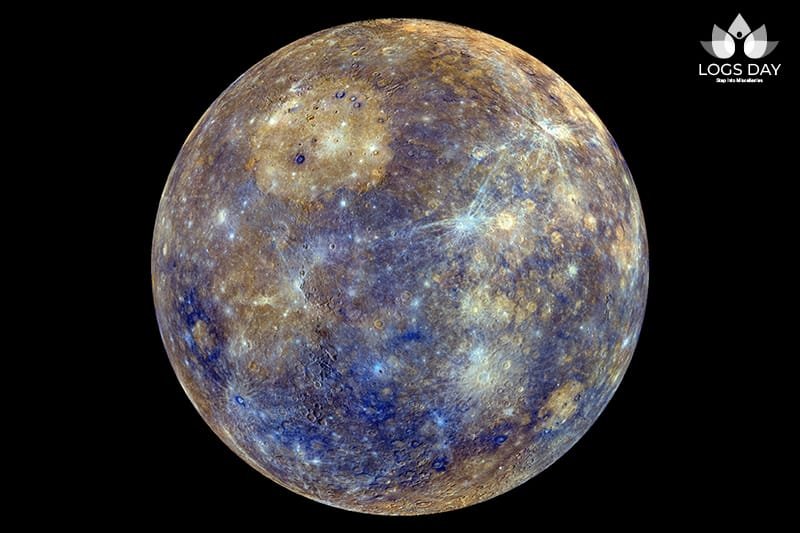Delve into the enigma of Mercury’s shrinking, uncovering the captivating phenomenon behind its gradual reduction in size. Explore the geological dynamics, the cooling core, and the emergence of lobate scarps, shedding light on the secrets of this celestial transformation.
Unlocking the Riddle Behind Mercury’s Shrinking
Mercury, the enigmatic planet closest to the Sun, continues to bewilder scientists and stargazers alike. Its mysterious nature and intriguing characteristics have given rise to numerous scientific inquiries. Among the most captivating enigmas surrounding Mercury is its apparent shrinking. In this article, we embark on a journey of exploration to uncover the perplexing phenomenon behind Mercury’s shrinking and delve into the profound implications it holds for our understanding of planetary dynamics.
Unveiling the Mechanics of Mercury’s Shrinking
Mercury’s shrinking refers to the gradual reduction in its size, a phenomenon that has fascinated researchers for decades. While the small size of Mercury has been known for centuries, recent advancements in space exploration have shed new light on this peculiar characteristic.
Why is Mercury Shrinking?
To comprehend the mysteries of Mercury’s shrinking, we must first examine its geological dynamics. The key factor at play is the cooling of its core. Mercury’s core, predominantly composed of iron, cools and solidifies over time. As this process occurs, the contracting core exerts immense pressure on the planet’s outer layers, compelling them to compress and reduce in size.
Furthermore, the contraction of the core induces profound changes in the planet’s crust. The cooling process causes the crust to buckle and fold, resulting in the formation of unique features known as lobate scarps. The crust thrusting together creates these elongated cliffs, which leave behind unmistakable evidence of Mercury’s shrinking.
Mercury’s Shrinking: How Is It Happening
The phenomenon of Mercury’s shrinking unfolds gradually, as the planet’s core cools and contracts. This process can be likened to the gradual drying and withering of a grape, culminating in a diminished size and altered appearance.
Uncovering the extent of Mercury’s shrinkage relies on meticulous analysis of the data and images captured by spacecraft missions like NASA’s MESSENGER. These invaluable resources have enabled scientists to identify and measure the presence of lobate scarps, confirming the contraction of the planet’s surface.
Interestingly, Mercury’s shrinkage is not uniform throughout its entirety. Certain regions experience more pronounced contraction, leading to the formation of larger and more prominent lobate scarps. These colossal scarps can extend for hundreds of kilometers and tower up to a kilometer in height, serving as captivating markers of the planet’s transformative journey.
Wrapping up
To wind up, the extraordinary phenomenon of Mercury’s shrinking continues to captivate the minds of scientists and astronomy enthusiasts alike. The gradual cooling and solidification of its iron core, coupled with the compression of the planet’s crust, contribute to this mesmerizing process. The emergence of lobate scarps on Mercury’s surface stands as undeniable evidence of its ongoing transformation.
As we strive to uncover more mysteries and push the boundaries of space exploration, the exploration of Mercury’s shrinking offers invaluable insights into the geological evolution of planets and fuels our quest for knowledge.
Featured Snippets
No, Mercury does not have any moons. It is the only planet in our solar system, aside from Venus, that does not possess any natural satellites.
A day on Mercury, also known as its rotational period, is equivalent to approximately 58.6 Earth days. This means that Mercury rotates on its axis much more slowly than the Earth, resulting in longer days.
A year on Mercury, or its orbital period, lasts approximately 88 Earth days. Due to its close proximity to the Sun, Mercury completes its orbit relatively quickly compared to other planets in our solar system.
Despite being one of the hottest planets, water ice has been detected on Mercury’s surface. These ice deposits are usually found in deep craters near the poles where sunlight cannot reach. It provides permanent shade and allows the ice to remain frozen.
Yes, Mercury is visible from Earth with the naked eye. However, due to its proximity to the Sun, it is typically challenging to observe. Mercury can be seen during specific periods when it is at its greatest elongation. It appears as a bright star-like object just above the horizon before sunrise or after sunset.
Yes, Mercury has a very thin and tenuous atmosphere known as an exosphere. It consists mostly of hydrogen, helium, and traces of other gases. However, the exosphere is so thin that it does not have a significant impact on the planet’s surface or climate.

